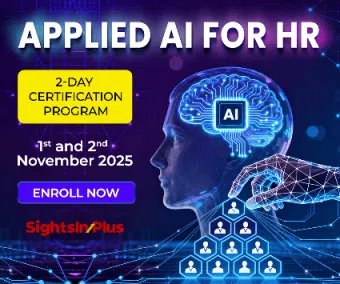Union Cabinet has approved the Employment Linked Incentive (ELI) Scheme with a budgetary outlay of ₹99,446 crore.
The scheme, announced in the Union Budget 2024–25, is designed to incentivize both first-time employees and employers creating sustained new jobs across sectors, with a special focus on manufacturing.
ELI Scheme Overview and Registration Timeline
The ELI Scheme will be operational for jobs created between August 1, 2025, and July 31, 2027, with a two-year registration window.
It will generate over 3.5 crore formal jobs, including 1.92 crore first-time EPFO-registered employees and 2.6 crore additional employment opportunities through employer incentives.
The scheme is administered by the Ministry of Labour and Employment and implemented via the Employees’ Provident Fund Organisation (EPFO).
The government formulated it after extensively consulting stakeholders, including central ministries, trade unions, industry associations, and policy experts.
Part A: Incentives for First-Time Employees
Part A of the scheme targets individuals entering the formal workforce for the first time.
Eligible employees—those earning up to ₹1 lakh per month and registered with EPFO—will receive an incentive equivalent to one month’s EPF wage, capped at ₹15,000, disbursed in two installments.
- The first installment is payable after six months of continuous service.
- The second installment is released after twelve months, contingent upon completion of a financial literacy programme hosted on the EPFO portal.
EPFO will deposit a portion of the second installment into a fixed savings instrument to promote savings, making it accessible after a defined holding period.
Payments will be made via Direct Benefit Transfer (DBT) using the Aadhaar Bridge Payment System (ABPS).
Part B: Incentives for Employers Creating Additional Jobs
Part B incentivizes employers to generate sustained new employment. Establishments registered with EPFO must hire:
- At least two additional employees (if current staff is below 50), or
- At least five additional employees (if staff is 50 or more),
and retain them for a minimum of six months to qualify.
Employers will receive up to ₹3,000 per month per employee for two years.
For the manufacturing sector, this benefit extends to four years, recognizing its potential for large-scale job creation.
The incentive is structured based on wage slabs:
| EPF Wage Slab (₹) | Monthly Incentive to Employer (₹) |
|---|---|
| Up to ₹10,000 | ₹1,000 |
| ₹10,001 – ₹20,000 | ₹2,000 |
| ₹20,001 – ₹1,00,000 | ₹3,000 |
EPFO will credit payments directly to employers’ PAN-linked bank accounts to ensure transparency and accountability.
Strategic Objectives and Broader Impact
The ELI Scheme is part of a larger ₹2 lakh crore employment and skilling package announced by the government to support 4.1 crore youth.
It aims to:
- Formalize the workforce by expanding EPFO coverage
- Encourage savings and financial literacy
- Support employers in scaling operations
- Boost employment in labour-intensive sectors, especially manufacturing
The scheme links incentives to sustained employment and EPFO registration, which improves job quality, retention, and access to social security benefits such as provident fund and pension.
Implementation and Monitoring
The EPFO will oversee implementation through its digital infrastructure, enabling real-time tracking of employment data, wage reporting, and incentive disbursement.
Employers and employees must complete EPFO registration, Aadhaar seeding, and UAN activation before the scheme’s start date to ensure their eligibility.
Note: We are also on WhatsApp, LinkedIn, Google News, and YouTube, to get the latest news updates. Subscribe to our Channels. WhatsApp– Click Here, Google News– Click Here, YouTube – Click Here, and LinkedIn– Click Here.



